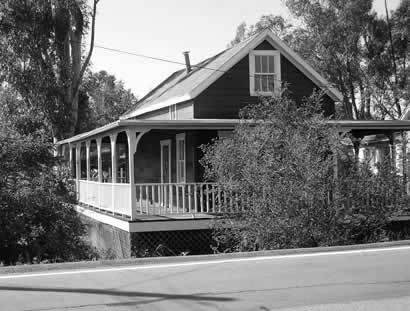
![]()
![]()
![]()
![]()
![]()
![]()
|
The Beaty House--now a museum. Photograph by the beatys Adam A. Beaty was born February 17, 1821, at Fort Gibson, Arkansas. His father was born in South Carolina and his mother was born in Missouri. He had three brothers. He enlisted in the Mexican War as a private at Ellis County, Texas on June 13, 1846. The following was his description at the time of his enlistment, age 24 years: height 6 feet; complexion light; hair dark brown; eyes blue. He enlisted in Captain Eli Chandler’s Company, 1st Texas Mounted Volunteers, commanded by John C. Hays. He was in actual service for the term of 4 months and was in the Battle of Monterey, several skirmishes and was honorably discharged at the town of Monterey, Mexico on October 2, 1846. During the war he became partially blind in his right eye from exposure to heat. On September 24, 1863, he was married to Norwegian descendant Caroline A. Johnson in Milford, Ellis County, Texas by Valentine Sevier, Justice of the Peace. This was his only marriage. Caroline was married previously to Thomas Cureton, who was killed in the Civil War. Adam and Caroline never had children. Forty-eight year old Adam Beaty and his thirty-two year old wife Caroline came to Harbison Canyon in San Diego County in 1869. Little is know of the Beatys during this period. San Diego County’s mountainous back country was sparsely settled in the 1870’s and the Beaty’s nearest neighbor lived five miles away. Their home was just east of the creek at present Ironsides Park. Honey production, introduced to the county in 1869, grew into one of the principal industries of the area in less than a decade. In 1875 there were 10,000 hives in the region. Five years later the number had doubled. He may have started bee keeping in the 1870’s. In 1885, Beaty owned 170 hives and had a small income from the honey. He lost the hives to a fire around 1890. In 1875, Alpine Ranch resident Warren Webb shot and killed a French sheepherder, whom he claimed was harassing the district’s first teacher, Miss Everhart. Adam Beaty testified at the greatly publicized inquest for Webb, and some time later moved further up the hill. On September 12, 1883, the San Diego Union printed a notice that Adam Beaty intended to make final proof in support of a homestead claim. On February 20, 1884, Beaty received a homestead patent for 160 acres at Rancho del Sequan on Tavern Road. The Beaty’s were held in high regard by Alpine residents as founders of the community who had experienced and participated in its development from an isolated frontier area to a well established farming community. Adam served on the school board in 1888. By then, Alpine was recognized as an established community with its own school, church, post office and blacksmith shop. Between January 5, 1893 and August 30, 1895, Adam Beaty was wholly disabled and could not perform manual labor because of kidney and bladder disease and debility from age. He owned four horses, one colt, one cow and one calf. Because of his disability he loaned out the horses and colt simply for their feed. He received a small pension of $8.00 per month and his only other income was a few dollars he could pick up from chores performed from time to time during the year, perhaps $25.00 per year. In 1895, his pension was raised to $12.00 per month. Grains and fruit orchards became the principal crops of Alpine farmers. Alpine’s fields and hillsides produced wine and raisin grapes, peaches, lemons, oranges, olives and apples. The Beaty’s planted the olive orchard on Rancho del Sequan during the 1890’s and the orchard is still there today. In 1899, Adam Beaty built a farmhouse with his own hands based on traditional British folk house forms. It was a design called the “I” house. This style was common in the Tidewater South of the United States prior to 1830. As a result of extensive study of the house, it has been determined that the Beaty farmhouse is of major historical, but not architectural, importance. Advanced age finally caught up with Adam Beaty, and he died at his home on May 1, 1903. He is buried at the Alpine Cemetery. Caroline stayed on the homestead and applied for widow pension. In Caroline’s affidavit she stated that she is now suffering extreme poverty and is nearly blind. In 1908, Caroline Beaty sold her homestead to the Wheeler family. The Beaty house received the nickname “Chiquita” and became a “tenant house” during the remodeling of the Wheeler mansion. Caroline Beaty received $12.00 per month until her death on December 28, 1911. She was buried next to her husband, but only his headstone is visible.
__________ This information was taken from a brochure donated to the Alpine Historical Society by the Southern California American Indian Resource Center, Inc. (SCAIR). |